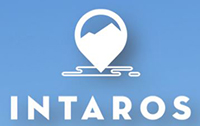One of the aims of INTAROS is to build additional capacity within Indigenous and civil society organizations, government agencies and scientists on community-based and citizen science observing in the Arctic. There is no single ‘right’ way of undertaking community-based observing. The approach will vary and what is suitable to ensure effective monitoring will change from one place to the next although there are a number of features which, in many cases, will be shared. One of the most effective ways to build capacity in community-based observing is through bringing people together and enabling the participants to share their experiences related to community-based observing, discussing and agreeing on what works, when and why.
Over the course of the INTAROS project, from Dec. 2016 to May 2021, the project has organized or co-organized 40 workshops, dialogue meetings, seminars and other events on community-based monitoring (CBM) in the Arctic and Sub-Arctic. The events have been attended by at least 600 people, including representatives from five Arctic Indigenous Peoples (Inuit, Sami, Evenk, Gwi´chin and Komi Izhma), and citizens of all eight Arctic nations. It is noteworthy that there have been some 200 youth among the participants, mostly from Arctic Russia.
The events have contributed to >400 pages of proceedings, technical reports and publications on community-based observing in the Arctic. Summaries of the discussions at most of these events have already been widely circulated. In this document, we highlight 12 of the events on community-based observing, including seven workshops, one international conference side-event, three online meetings, and one in-service training course. These events were held in Alaska, Canada, Greenland, Norway, Germany, Russia, and online during Covid-19.
In many discussion sessions at the events, participants were concerned about how to connect CBM programs with top-down observing approaches and associated management decision-making processes. In the last part of this document, we therefore discuss the challenges and opportunities for connecting CBM programs with top-down observing approaches and associated management decision-making processes, drawing on a review by Hajo Eicken and colleagues (2021).
Connecting CBM programs and top-down observing approaches can lead to improved information products and enhanced efficiency and sustainability of observing programs (Eicken et al. 2021). It can also promote stronger linkages between CBM programs and natural resource management decision-making processes. Core principles central to such linkages are: 1) matching observing program aims, scales, and ability to act on information; 2) matching observing program and community priorities; 3) fostering compatibility in observing methodology and data management; 4) respect for Indigenous intellectual property rights and the implementation of Free, Prior, and Informed Consent; 5) creating sufficient organizational support structures and ensuring that CBM programs link with decision-making processes on natural resource management; and 6) ensuring sustained community members’ commitment. In the document, we present and discuss suitable interventions to overcome challenges in adhering to these six principles.
